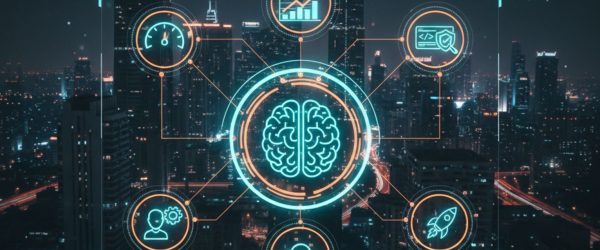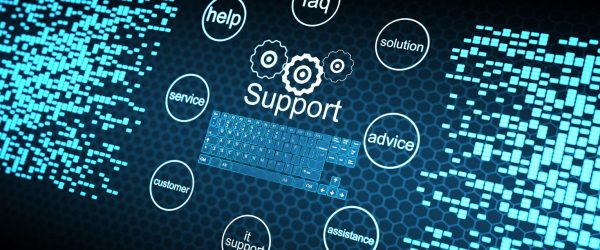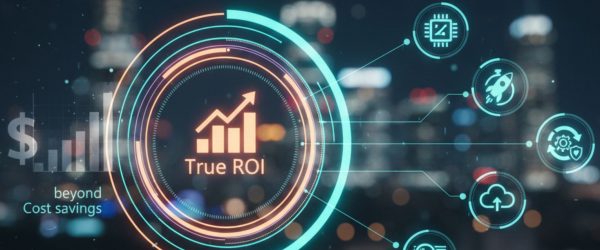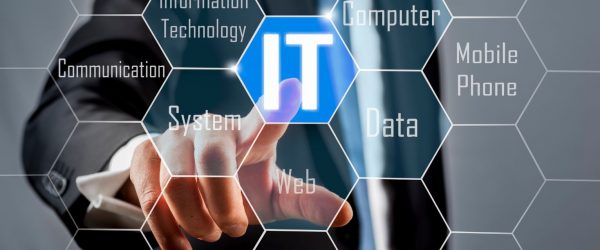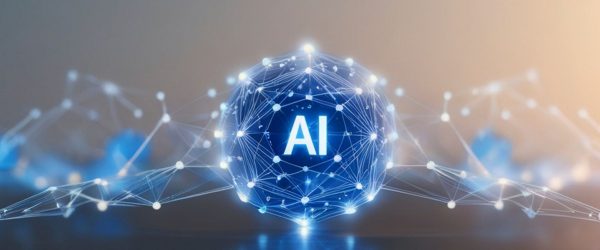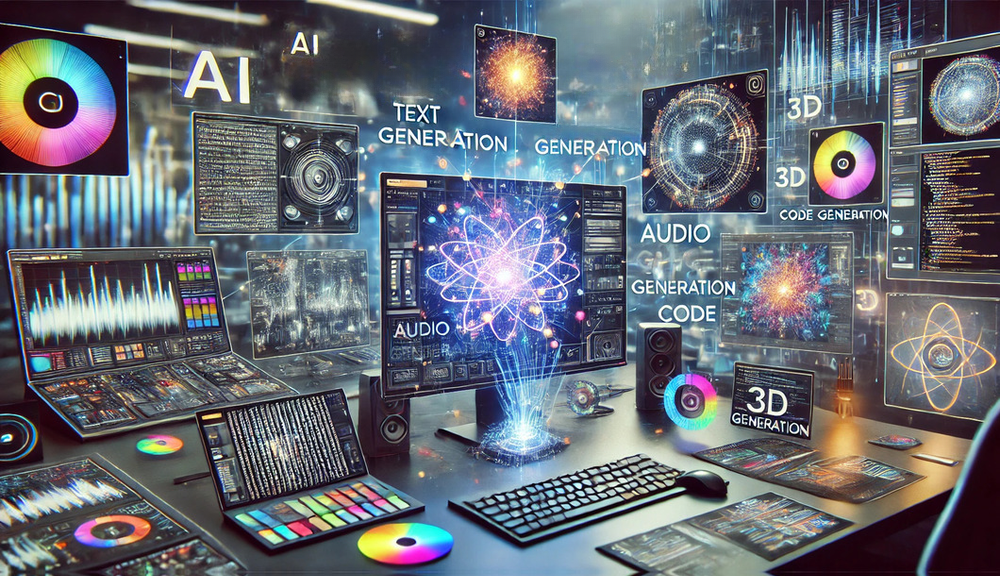
Generative AI, a groundbreaking advancement in machine learning, is revolutionizing industries by creating content in ways that were previously thought to be exclusive to human creativity. From generating stunning images to writing complex code, generative AI is rewriting the rules of innovation. In this blog, we’ll dive into how generative AI models are reshaping the world as we know it, breaking down the transformation across different sectors—text, image, audio, video, and more.
1. Text Generation: Unlocking the Power of Words
Text-based generative AI models, like GPT (Generative Pretrained Transformer), are taking natural language processing to new heights. These models generate coherent and creative text that mimics human writing, enabling everything from automatic article generation to chatbots that feel more alive.
With models like GPT-4 and T5, we’ve entered an era where AI can write books, summarize complex documents, answer customer queries, or even pen poetry. These systems understand context better than ever before, making them powerful tools for automation in sectors like content creation, customer service, and education.
Impact on Industries:
- Marketing & Content Creation: SEO-optimized blog posts, product descriptions, and emails can now be drafted in seconds.
- Customer Support: Intelligent chatbots powered by GPT-style models are streamlining the customer service experience by handling multiple languages and tones with ease.
2. Image Generation: Where Art Meets Algorithms
Generative AI is redefining visual creativity with image generation models like DALL-E, Stable Diffusion, and StyleGAN. These systems create realistic images from simple text descriptions, allowing non-designers to conjure up professional-grade visuals with minimal effort.
Want to create an artwork? DALL-E can generate surreal paintings from your imagination. Need stock photos? Stable Diffusion can whip up images from any prompt. This shift in how images are produced is democratizing creativity, making high-quality visuals accessible to all.
Impact on Industries:
- Design & Fashion: Designers can rapidly prototype ideas, generate fashion concepts, or envision new products.
- Advertising & Media: Brands are using AI-generated images to create personalized ad campaigns at scale, catering to individual tastes.
3. Audio Generation: Crafting Sounds of the Future
In the audio realm, models like WaveNet and Tacotron are shaping the future of sound. Whether you’re generating music or converting text into natural-sounding speech, these systems are changing how we produce and consume audio.
Jukebox, OpenAI’s music generation model, can produce entire songs complete with lyrics, melody, and vocals, while Tacotron is revolutionizing text-to-speech applications, bringing us closer to lifelike virtual assistants and voiceovers.
Impact on Industries:
- Entertainment & Music: AI-generated music is providing creators with endless inspiration, allowing musicians to co-create with algorithms.
- Voice Assistants & Accessibility: Improved speech synthesis enhances virtual assistants and empowers individuals with disabilities, offering seamless voice-to-text conversion.
4. Video Generation: The Future of Visual Storytelling
If you thought video production was out of reach for AI, think again. With models like MoCoGAN and VideoGPT, generative AI is stepping into the realm of video content creation. Imagine feeding a model a script and receiving a fully animated video in return. While still in its infancy, video generation technology promises to transform industries such as media, entertainment, and marketing.
Impact on Industries:
- Advertising & Content Creation: AI-generated videos cut down on production costs and time, allowing brands to scale video content.
- Film & Animation: Filmmakers are exploring AI for automating mundane tasks like creating background scenes or animating characters.
5. Multimodal Models: Fusing Text and Images for Contextual Brilliance
Enter the world of multimodal AI models like CLIP and Flamingo, where text and image data merge to create a deeper understanding of context. These models not only generate but also interpret visuals and language simultaneously, offering more interactive AI applications.
For instance, CLIP pairs seamlessly with DALL-E to understand and generate detailed images based on nuanced text inputs. These systems are transforming fields like gaming, virtual reality, and interactive media, where real-time feedback and visual-text fusion are key.
Impact on Industries:
- Healthcare: AI can generate medical reports or images based on text descriptions, assisting in faster diagnostics.
- Education: Interactive learning tools driven by multimodal AI offer students a richer, more engaging experience.
6. 3D Object Generation: Building the Future in Virtual Space
Generative AI is venturing into the third dimension with models like NeRF and Point-E, which allow for the creation of 3D objects and environments from 2D data. This shift is monumental in industries like gaming, architecture, and e-commerce, where 3D assets are critical.
NeRF (Neural Radiance Fields) can generate entire 3D scenes from just a few photographs, while Point-E creates detailed 3D models from textual prompts, opening new doors in virtual world-building and product design.
Impact on Industries:
- Gaming & VR: AI-generated 3D objects and landscapes are speeding up game design and enhancing immersion in virtual worlds.
- E-commerce: Retailers can create 3D models of products, allowing customers to view them from every angle before purchase.
7. Speech Synthesis and Voice Cloning: Voices for the Digital Era
In the world of speech synthesis, models like VALL-E are breaking barriers by cloning voices with stunning accuracy after hearing just a few seconds of audio. This technology opens up endless possibilities, from personalizing virtual assistants to bringing long-gone voices back to life for historical projects.
Impact on Industries:
- Media & Entertainment: Celebrities and influencers can license their voices for various applications, from audiobooks to advertisements.
- Accessibility: Voice cloning can enable those with speech impairments to have a personalized, AI-generated voice.
8. Code Generation: AI for Developers
For developers, generative AI is turning coding into a collaborative process. Tools like Codex, which powers GitHub Copilot, and AlphaCode are designed to generate code based on plain text instructions. Imagine describing a feature you want, and the AI writes the code for you. These models are revolutionizing software development, making it faster and more accessible for non-programmers.
Impact on Industries:
- Software Development: Coders can now focus on creative problem-solving while AI handles repetitive coding tasks.
- Automation: AI-generated scripts and automation tools are streamlining operations across sectors.
The Road Ahead
Generative AI is not just a technological marvel but a creative partner, shaping the future across industries by automating mundane tasks, unlocking new possibilities, and democratizing access to high-quality content creation. Whether it’s crafting text, designing visuals, composing music, or even writing code, generative AI is fundamentally transforming how we live, work, and create.
The next frontier? Expect more immersive, interactive experiences powered by generative AI as these models evolve in sophistication and scale. We’re standing on the cusp of a world where AI not only enhances human creativity but works alongside us, pushing the boundaries of innovation.
So, how will you harness the power of generative AI to transform your world?
Final Thoughts:
The generative AI revolution is underway, and the only question left is—are you ready to dive in?


